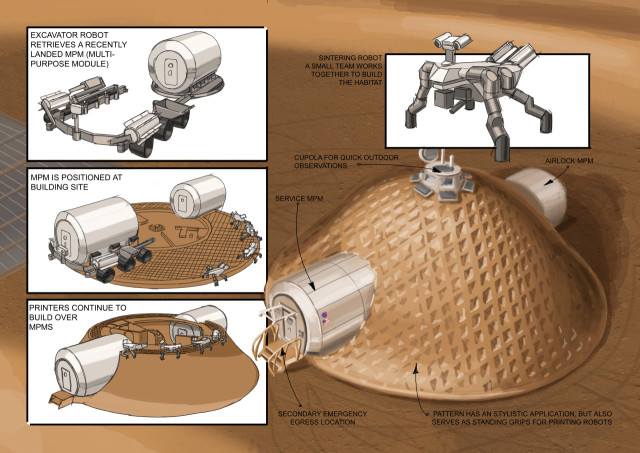Page 10838
Apr 9, 2016
FBI Warns of Cyber Threat to Electric Grid
Posted by Karen Hurst in categories: cybercrime/malcode, energy, government
Three months after a Department of Homeland Security intelligence report downplayed the threat of a cyber attack against the U.S. electrical grid, DHS and the FBI began a nationwide program warning of the dangers faced by U.S. utilities from damaging cyber attacks like the recent hacking against Ukraine’s power grid.
The nationwide campaign by DHS and the FBI began March 31 and includes 12 briefings and online webinars for electrical power infrastructure companies and others involved in security, with sessions in eight U.S. cities, including a session next week in Washington.
The unclassified briefings are titled “Ukraine Cyber Attack: Implications for U.S. Stakeholders,” and are based on work with the Ukrainian government in the aftermath of the Dec. 23 cyber attack against the Ukrainian power infrastructure.
Apr 9, 2016
This tool will help you build a bot on your own
Posted by Karen Hurst in category: robotics/AI
Nice! Now, we’re talking. Check out Meya.ai
Meya wants to make it easy for anybody to design, deploy and use bots on messaging apps with its new bot platform.
Apr 9, 2016
Scientists are developing graphene solar panels that generate energy when it rains
Posted by Shailesh Prasad in categories: solar power, sustainability
Solar power is making huge strides as a reliable, renewable energy source, but there’s still a lot of untapped potential in terms of the efficiency of photovoltaic cells and what happens at night and during inclement weather. Now a solution has been put forward in the form of producing energy from raindrops.
Key to the new process is graphene: a ‘wonder’ material we’ve heard plenty about before. Because raindrops are not made up of pure water, and contain various salts that split up into positive and negative ions, a team from the Ocean University of China in Qingdao thinks we can harness power via a simple chemical reaction. Specifically, they want to use graphene sheets to separate the positively charged ions in rain (including sodium, calcium, and ammonium) and in turn generate electricity.
Early tests, using slightly salty water to simulate rain, have been promising: the researchers were able to generate hundreds of microvolts and achieve a respectable 6.53 percent solar-to-electric conversion efficiency from their customised solar panel.
Apr 9, 2016
Watch SpaceX’s historic ocean landing in crystal-clear 4K
Posted by Klaus Baldauf in categories: drones, robotics/AI, space travel

Still haven’t had enough of SpaceX’s rocket landing in the middle of the ocean? Well, new 4K video is here to satisfy you and then make you hungry for more. Late last night, SpaceX released high-definition footage taken from a chase plane, showing the Falcon 9’s delicate descent onto the autonomous drone ship “Of Course I Still Love You.”
The extra detail gives you a nice glimpse into how the rocket’s legs deployed just prior to landing (and that one of the legs seemed to lag behind the rest). It also shows how the vehicle landed a little off its mark. SpaceX probably didn’t want to show off too much by hitting the bulls eye. That just wouldn’t have been fair.
Continue reading “Watch SpaceX’s historic ocean landing in crystal-clear 4K” »
Apr 9, 2016
Can black holes transport you to other worlds?
Posted by Sean Brazell in categories: cosmology, space travel
If you believe the creations of science fiction, black holes serve as gateways to other worlds, either distant parts of this universe or other universes entirely. But the reality might be more complicated than that. And outside of the sci-fi realm, dropping into a black hole is a bad idea.
Even so, it turns out that people who enter a black hole would have at least a slight chance of escaping, either back into their own world or to some exotic place. This is because black holes actually bend space itself, and so could bring points that are ordinarily distant from each other much closer together.
An oft-used analogy is the bending of a piece of paper. If you draw a line on the paper, it follows the paper’s shape and the line’s length is unchanged by bending the paper. But if you go through the paper, the end points of the line are much closer to one another. Understanding this requires diving into Einstein’s theory of relativity as applied to gravity. [5 Reasons We May Live in a Multiverse].
Continue reading “Can black holes transport you to other worlds?” »
Apr 9, 2016
Team MASS is developing a 3D printed Martian habitat using laser sintered regolith
Posted by Klaus Baldauf in categories: 3D printing, habitats, space
Apr 9, 2016
Scientists store digital images in DNA, and retrieves them perfectly
Posted by Montie Adkins in categories: biotech/medical, business, computing
The digital universe — all the data contained in our computer files, historic archives, movies, photo collections and the exploding volume of digital information collected by businesses and devices worldwide — is expected to hit 44 trillion gigabytes by 2020.
Researchers have developed one of the first complete systems to store digital data in DNA — allowing companies to store data that today would fill a big box store supercenter in a space the size of a sugar cube.
Apr 9, 2016
New iRobot Spinoff Eyes Big Pentagon Contracts
Posted by Karen Hurst in categories: business, military, robotics/AI
IRobot is going after the military dollars. Smart move given that the military in all branches are trying to modernize with AI.
By Sandra I. Erwin.
Continue reading “New iRobot Spinoff Eyes Big Pentagon Contracts” »
Apr 8, 2016
Watch: By 2020 We Will Be Able to Produce a Brain In a Box
Posted by Shailesh Prasad in category: neuroscience

https://youtube.com/watch?v=HdoyQpF9ehE
The best kind of science fiction comes to life (well, to a box, technically).















